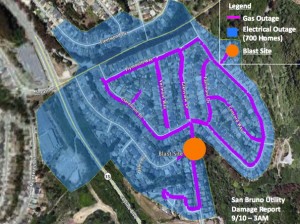Massachusetts DOS Releases Opinion Letter on Prevailing Wage Law Classification
The DOS regularly issues Prevailing Wage Opinion Letters and recently released PW-2010-10-08.24.10. This letter confirms “the job classification under the Massachusetts Prevailing Wage Law for workers who perform certain tasks related to the repair and replacement of existing reinforced concrete and steel bridge elements on highway projects.” The following categories of tasks were at issue:
- The cutting of concrete with a hand held machine with a diamond blade is paid at no less than the rate for “Demo: Concrete Cutter/Sawyer”.
- The removal of deteriorated concrete with a hand held pneumatic chipping hammer is paid at no less than the rate for a “Pneumatic Drill/Tool Operator”.
- Drilling and installing reinforcing dowels utilizing an electric hammer drill or pneumatic rock drill is paid at no less than the rate for a “Pneumatic Drill/Tool Operator”.
- Striking off concrete to proper grade with hand held shovel or screed is paid at no less than the rate for a “Laborer”.
- Placing concrete in work concrete formwork and vibrate with a hand held or form vibrator is paid at no less than the rate for a “Laborer”.
- Erecting and dismantling of exterior scaffolds for all trades for heavy highway and bridge work is paid at no less than the rate for a “Laborer”.
- Construct, and assist in constructing, concrete forms from 2 x 4s and plywood utilizing a handheld hammer, tape measure, level and skill saw.
- Erect, and assist in erecting, wood concrete forms to proper line and grade.
- Secure concrete forms with timber walers utilizing a handheld hammer and wrench.
The DOS concluded that tasks 1-6 above “are are paid at no less than the rates indicated” and “[t]he tasks designated in items 7 through 9, above, are paid at no less than the rate for a ‘Carpenter’”.
Finally, the DOS stated that “the removal of deteriorated reinforcing mat elements and the subsequent cutting, handling, placing the mats or wire mesh [and] the cutting and removing rebar with an oxygen acetylene torch, bolt cutter or cutoff saw [are] paid at the rate for an ‘Ironworker’”.
Vision Payroll is ready to assist employers in gathering information for certified weekly payroll reports. Vision Payroll can also prepare the certified weekly payroll reports for submission to the proper authorities. Contact Vision Payroll today to get started.













Vision Payroll